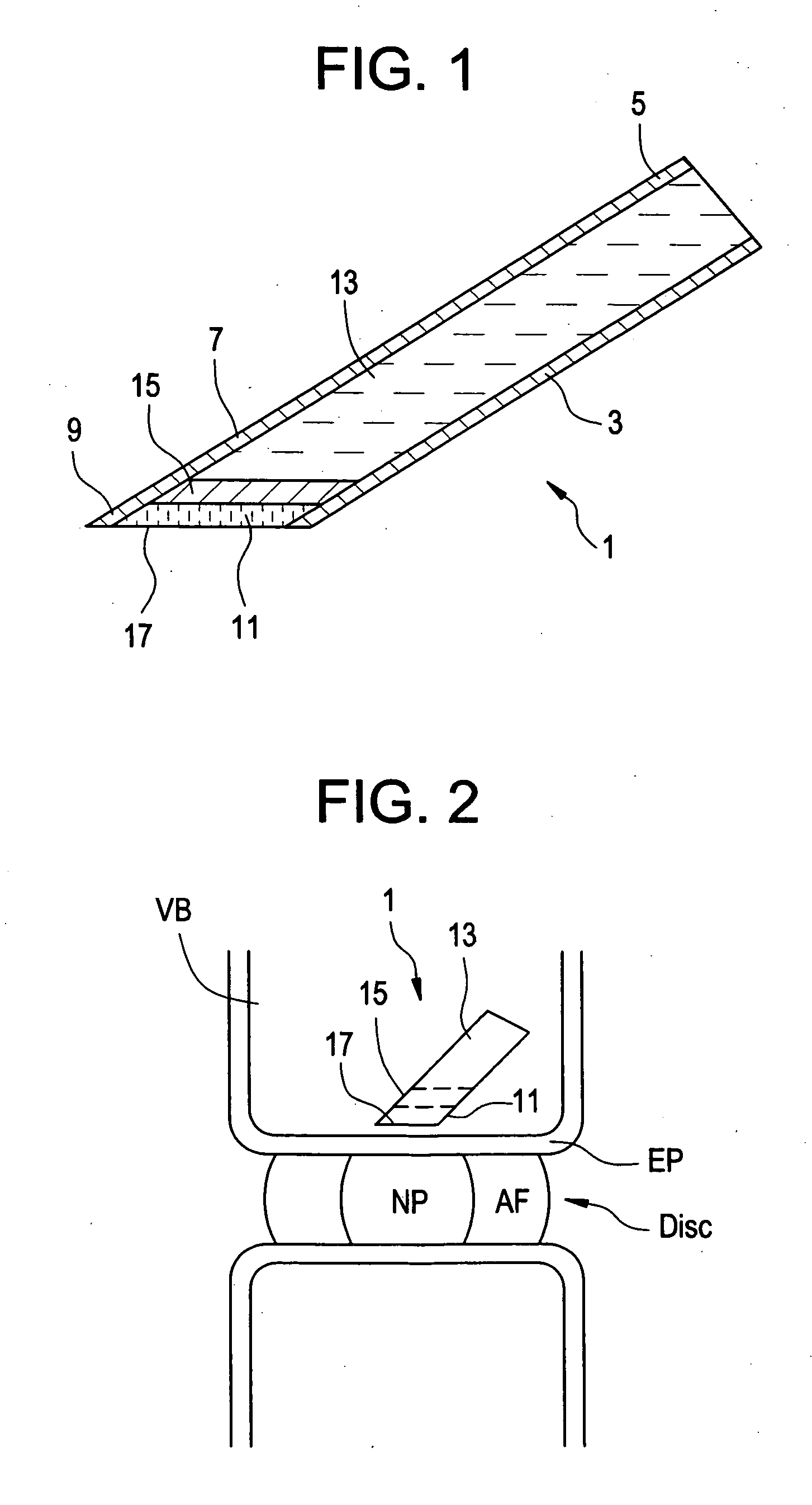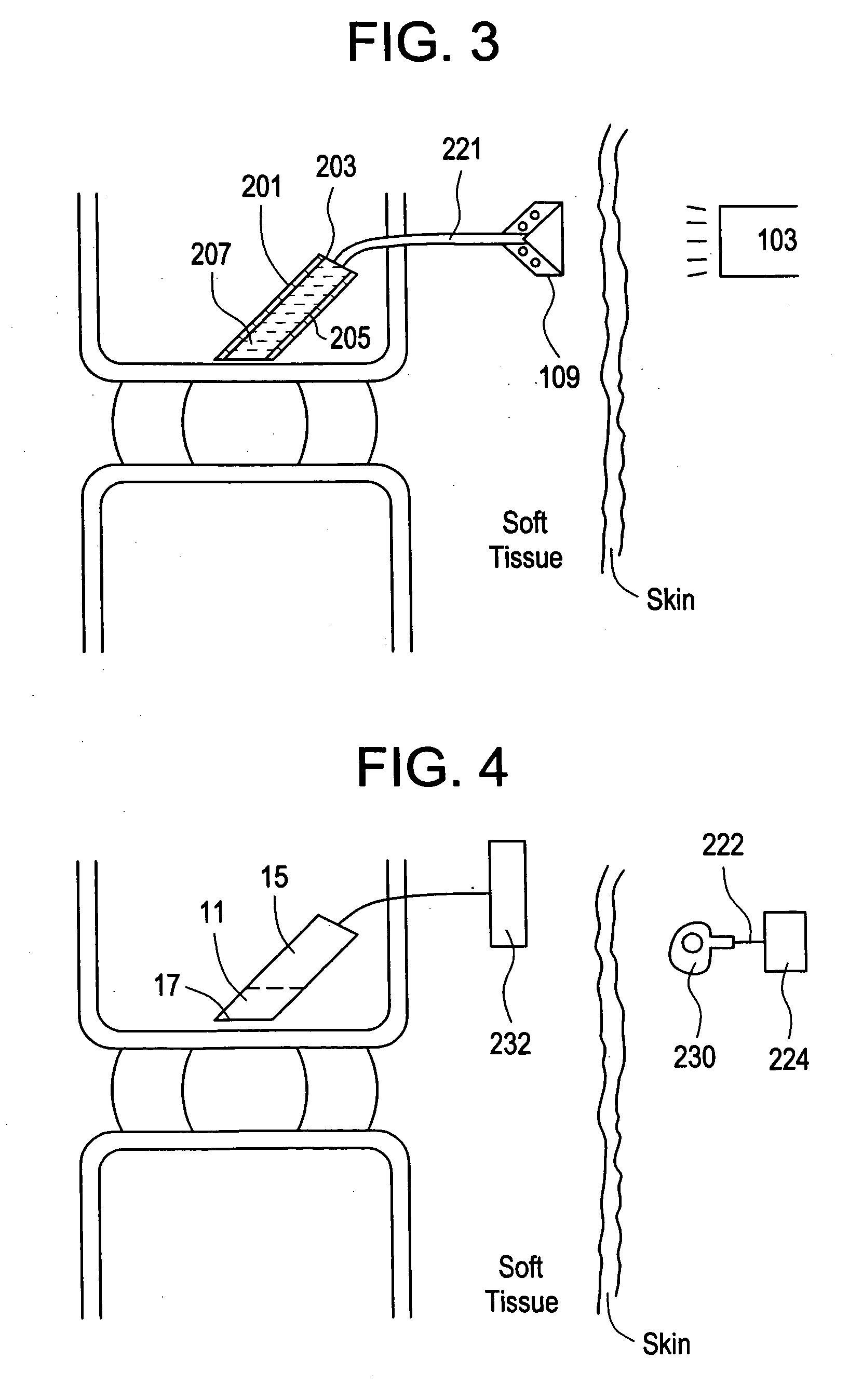Red light implant for treating degenerative disc disease
a technology of degenerative disc disease and implanted red light, which is applied in radiation therapy, medical science, therapy, etc., can solve the problems of high toxicity, retard the flow of nutrients into the disc, and the accumulation of toxins, so as to achieve the effect of cartilage repair
- Summary
- Abstract
- Description
- Claims
- Application Information
AI Technical Summary
Benefits of technology
Problems solved by technology
Method used
Image
Examples
Embodiment Construction
[0023] In some preferred embodiments, the therapeutic red light is delivered across the vertebral endplates adjacent the disc into the disc, preferably into the nucleus pulposus. This mode of delivery allows the clinician to avoid harming the disc. Such delivery can be effected by implanting a red light LED into the adjacent vertebral body, or by implanting a red light conduit into the adjacent vertebral body.
[0024] In other preferred embodiments, the therapeutic red light is delivered across the outside surface of the annulus fibrosus of the disc and preferably into the nucleus pulposus. Such delivery can be effected by anchoring a red light LED onto an outside surface of an adjacent vertebral body, and intradiscally directing the red light emitted by the LED.
[0025] In other preferred embodiments, the therapeutic red light is delivered to the disc through an intradiscal implant having a red light source.
[0026] Now referring to FIG. 1, there is provided an intraosteal red light i...
PUM
 Login to View More
Login to View More Abstract
Description
Claims
Application Information
 Login to View More
Login to View More - R&D
- Intellectual Property
- Life Sciences
- Materials
- Tech Scout
- Unparalleled Data Quality
- Higher Quality Content
- 60% Fewer Hallucinations
Browse by: Latest US Patents, China's latest patents, Technical Efficacy Thesaurus, Application Domain, Technology Topic, Popular Technical Reports.
© 2025 PatSnap. All rights reserved.Legal|Privacy policy|Modern Slavery Act Transparency Statement|Sitemap|About US| Contact US: help@patsnap.com



